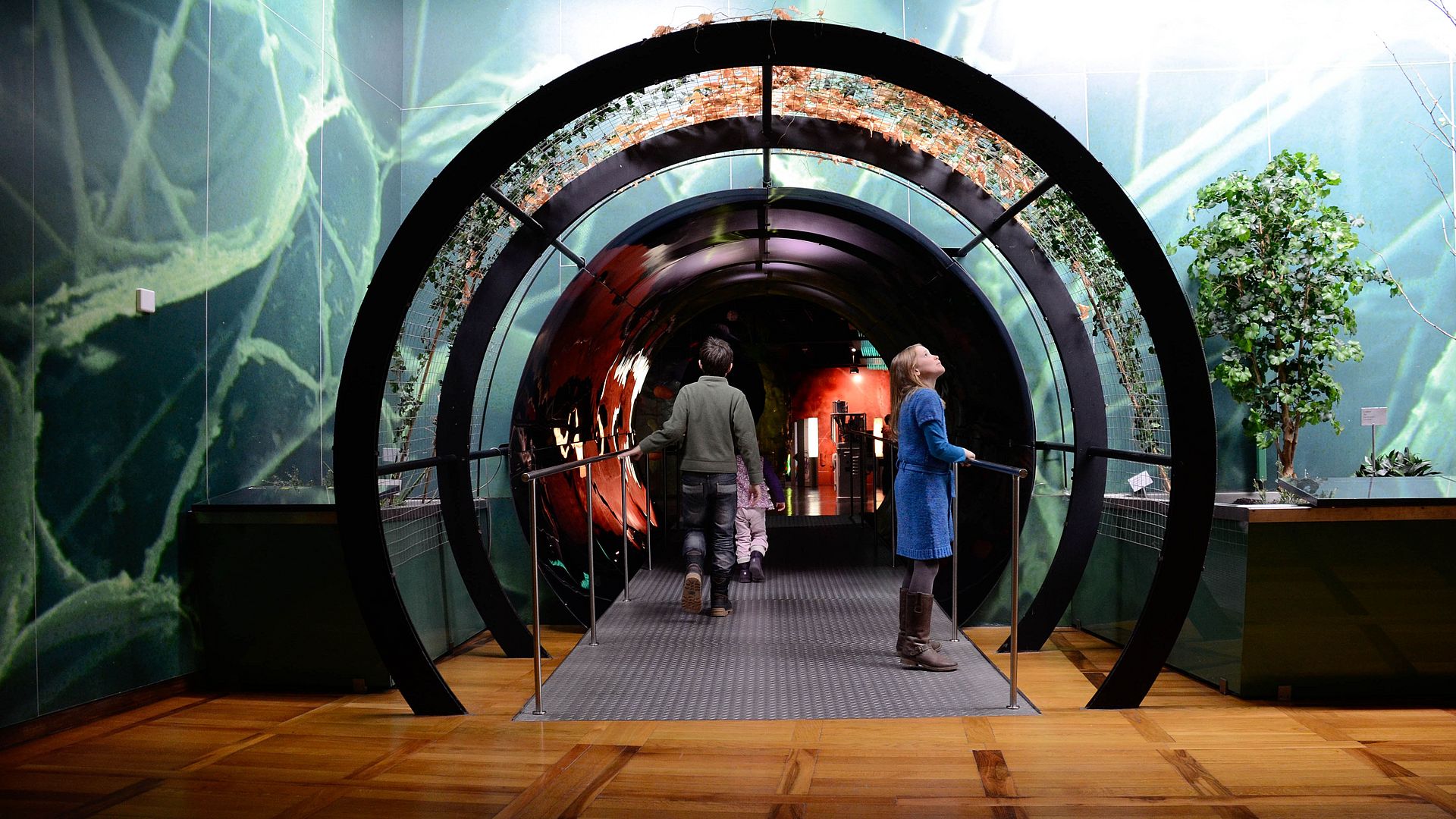
Photo: Deutsches Museum
Humanity and the Environment
Pharmaceutics – if it’s Alive it’s Chemistry!
The Pharmaceutics exhibition explains how new medicines are developed and how they can help people with various diseases.
What is Pharmaceutics?
Pharmaceutics is the natural science that focusses on the composition, effectiveness, testing, production and dispensing of medicines. Throughout history, people have strived to alleviate pain and treat disease. Healers carefully gathered knowledge on healing herbs and plant extracts and passed on their expertise. For a long time, medicines were only prepared in pharmacies.
Major advances in medicine and chemistry at the end of the 19th century led to the development of the first synthetically produced medicines. Many new and effective medicines have since been developed – both for minor aches and pains as well as for major epidemics. But the challenges facing pharmaceutics have not become any easier: new medicines are expected to be more effective, to cause fewer harmful reactions and to be more affordable – while also curing illnesses that even the most modern medicines cannot treat.
“We have to learn how to cast magic bullets that behave like the magic bullets of a marksman and exclusively hit pathogens.”
Exhibition Themes
Searching for new active ingredients. Photo: Deutsches Museum
The Development of New Medicines
The aim of pharamceutical research is to develop new medicines. The central component of all medication is its active ingredient – in other words, the substance that achieves the desired effect in the human body.
In Germany, medicines based on around 2,000 different active substances have been approved. But of the 30,000 diseases we know about, only a third can be treated effectively today and only a fraction can be completely cured. Researcher are working around the clock to find new active ingredients, improve therapies and reduce side effects.
Developing a new drug involves hundreds of individual steps that can take more than a decade to complete – and which in many cases are still unsuccessful.
Our hearts and cardiovascular systems are at risk. Photo: Deutsches Museum
Heart and Cardiovasular System
With the heart as its “motor”, the cardiovascular system supplies the body with nutrients and oxygen. If this system fails, damage to all organs, especially the brain, occurs within a few minutes. Cardiovascular diseases are responsible for almost every second death in Germany. The lifestyle common in industrialised countries – characterised by an unhealthy diet, lack of exercise, mental stress and smoking – is a major factor behind the rise in such diseases. The "Heart" area of the exhibition takes a look at cardiovascular diseases and their treatment – using the examples of high blood pressure, insufficient blood supply to the heart and heart failure.
AIDS – a disease becomes treatable. Photo: Deutsches Museum | Christian Illing
Infectious Diseases
When our cells are attacked by a foreign organism, an infection occurs. Alongside the history of the fight against infectious diseases, this exhibition area focusses on two specific examples: tuberculosis caused by bacteria and HIV infections caused by viruses, including its late stage AIDS. In 1882, Robert Koch (1843–1910) discovered the causative agent of tuberculosis. But “consumption”, as it was also called, was and still is a dangerous disease. Included in the exhbition is the “Blue Henry” from 1890. This was a pocket sputum flask that infected persons were expected to carry with them at all times and to use to prevent the further spread of the disease. The AIDS exhibition area presents both the molecular basis of the disease and treatment options. The main focus, however, is on the human and social aspects of the disease and you can listen to infected people and doctors specialising in AIDS treatment have their say in an audio installation.
All cells are the same and yet so different! Photo: Deutsches Museum
Journey into the Microcosm
Biochemical processes take place in the cells that make up our bodies. The centrepiece of the Pharmaceutics exhibition is a walk-in model of a human cell – 350,000 times larger than an actual cell! It reveals details of a cell’s inner structure, its subdivision into different cell organelles and their various functions. In addition to the walk-in cell, the “cell forest” depicts eight of the more than 200 specialised cell types found in the human body as luminous models at a scale of 1:25,000.
Around €1.5bnThe cost of developing a new drug
2,000The amount of different active ingredients that have been approved in Germany
30,000The number of different illnesses known today
Inside the Pharmaceutics Exhibition
From Cholera to Coronavirus
Marlene Heckl, a member of the Freundes- und Förderkreis Deutschen Museums e.V. (Friends and Sponsors of the Deutsches Museum), talks to Pharmaceutics curator Florian Breitsameter about infectious diseases. The film is currently only available in German.
Facts and Figures
- Around 800 sqm
- 9 thematic areas
- Opened in 2000, updated in 2010
Any Questions?
![]()
Dr. Florian Breitsameter
Kurator
Abteilung Pharmazie, Medizintechnik und MuseumsgeschichteTelephone +49 89 2179 502
Fax +49 89 2179 99350
Email f.breitsameter@deutsches-museum.de
Do you have organizational questions?
Cornelia Schubert
Assistance to department heads, main department heads and curators
Susanne Schmölz
Assistance to department heads, main department heads and curators









